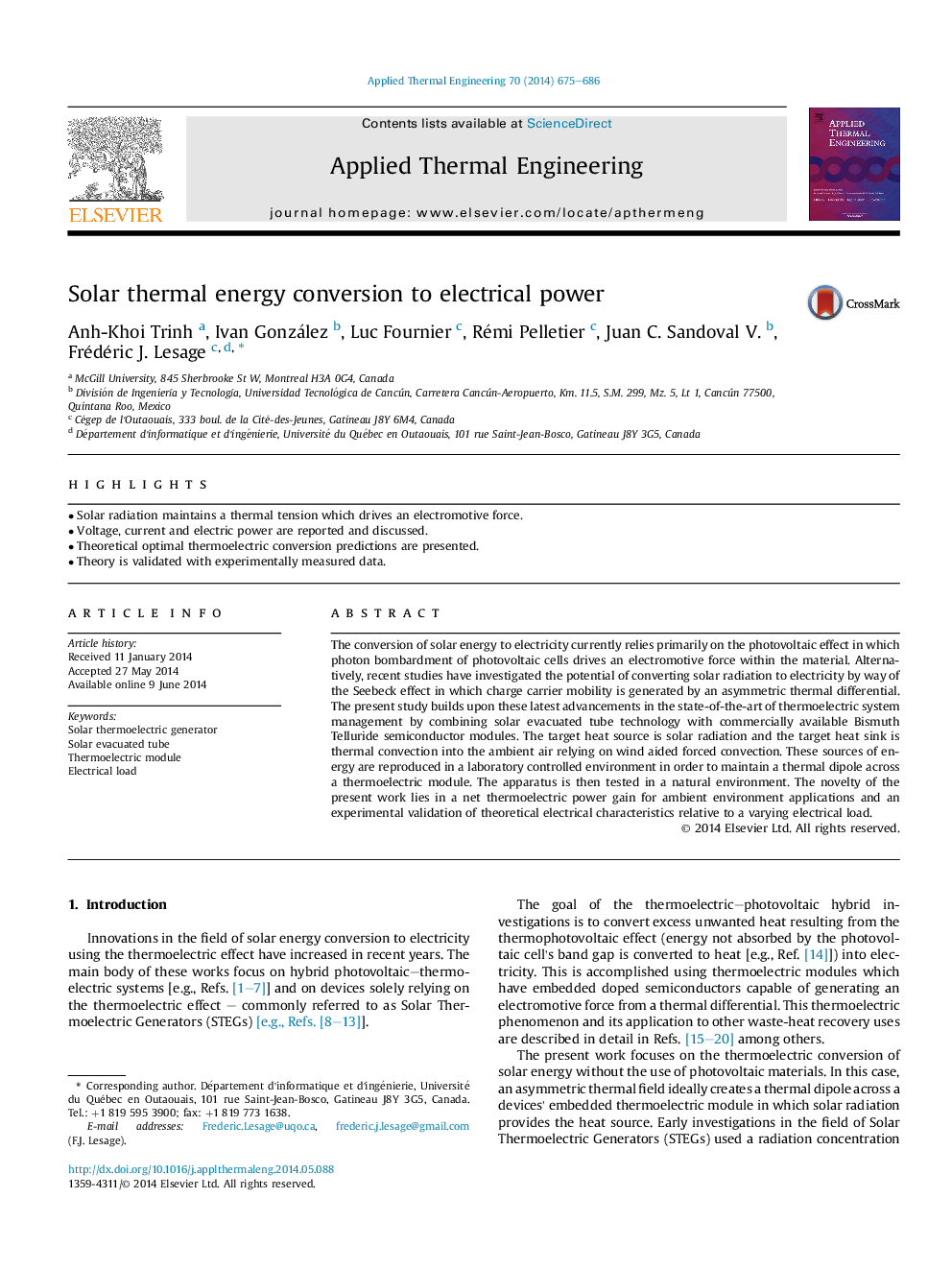| Article ID | Journal | Published Year | Pages | File Type |
|---|---|---|---|---|
| 646313 | Applied Thermal Engineering | 2014 | 12 Pages |
Abstract
The conversion of solar energy to electricity currently relies primarily on the photovoltaic effect in which photon bombardment of photovoltaic cells drives an electromotive force within the material. Alternatively, recent studies have investigated the potential of converting solar radiation to electricity by way of the Seebeck effect in which charge carrier mobility is generated by an asymmetric thermal differential. The present study builds upon these latest advancements in the state-of-the-art of thermoelectric system management by combining solar evacuated tube technology with commercially available Bismuth Telluride semiconductor modules. The target heat source is solar radiation and the target heat sink is thermal convection into the ambient air relying on wind aided forced convection. These sources of energy are reproduced in a laboratory controlled environment in order to maintain a thermal dipole across a thermoelectric module. The apparatus is then tested in a natural environment. The novelty of the present work lies in a net thermoelectric power gain for ambient environment applications and an experimental validation of theoretical electrical characteristics relative to a varying electrical load.
Related Topics
Physical Sciences and Engineering
Chemical Engineering
Fluid Flow and Transfer Processes
Authors
Anh-Khoi Trinh, Ivan González, Luc Fournier, Rémi Pelletier, Juan C. Sandoval V., Frédéric J. Lesage,
